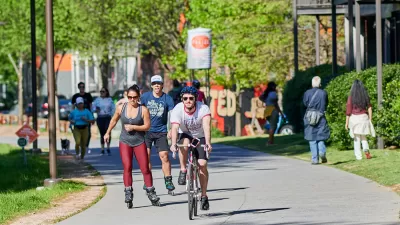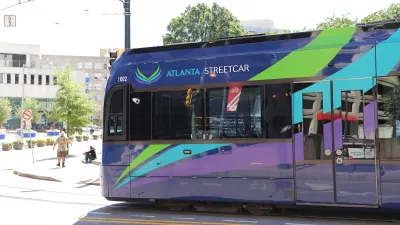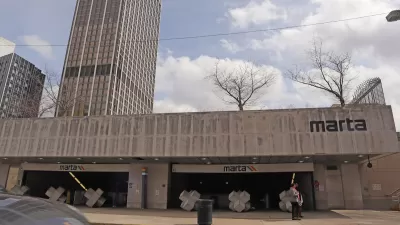The city once had an extensive streetcar system. Can it revive public transit once again?

An article in Atlanta Magazine by Rachel Garbus reminds readers that Atlanta once had a thriving public transportation system. “For the first half of the twentieth century, Atlanta’s public transportation system rivaled even that of bigger Northern cities like Baltimore and Pittsburgh. By 1928, the city’s streetcar system was so extensive, you could hop on in East Point and ride up to North Druid Hills, only changing trains once.”
The article includes historic photos of the city’s former electric streetcar system and explains how the system grew, then declined. At first, the (segregated) streetcars were operated by private companies. “Georgia officials mostly ignored public transit, pouring public dollars into highways instead. By the time MARTA took over transit as a public agency in 1972, the car had already won the fight for metro Atlanta.”
Now, traces of this history remain as opposition to public transit projects face opposition from “transit skeptics who think it’s a waste of taxpayer money to homeowners concerned about outsiders coming to their neighborhoods.”
Nicholas Bloom, author of The Great American Transit Disaster, says Atlanta may never reach world-class transit city status — “there’s been too much development to reverse engineer a public transit system” — “but he sees many opportunities to get people out of the cars into other modes of transportation.”
FULL STORY: Atlanta used to have extensive public transit, actually

Manufactured Crisis: Losing the Nation’s Largest Source of Unsubsidized Affordable Housing
Manufactured housing communities have long been an affordable housing option for millions of people living in the U.S., but that affordability is disappearing rapidly. How did we get here?

Americans May Be Stuck — But Why?
Americans are moving a lot less than they once did, and that is a problem. While Yoni Applebaum, in his highly-publicized article Stuck, gets the reasons badly wrong, it's still important to ask: why are we moving so much less than before?

Research Shows More Roads = More Driving
A national study shows, once again, that increasing road supply induces additional vehicle travel, particularly over the long run.

Judge Halts Enforcement of Anti-Homeless Laws in Grants Pass
The Oregon city will be barred from enforcing two ordinances that prosecute unhoused residents until it increases capacity and accessibility at designated camping sites.

Advancing Sustainability in Los Angeles County Schools
The Los Angeles County Office of Education’s Green Schools Symposium brings together educators, students, and experts to advance sustainability in schools through innovative design, climate resilience strategies, and collaborative learning.

Using Old Oil and Gas Wells for Green Energy Storage
Penn State researchers have found that repurposing abandoned oil and gas wells for geothermal-assisted compressed-air energy storage can boost efficiency, reduce environmental risks, and support clean energy and job transitions.
Urban Design for Planners 1: Software Tools
This six-course series explores essential urban design concepts using open source software and equips planners with the tools they need to participate fully in the urban design process.
Planning for Universal Design
Learn the tools for implementing Universal Design in planning regulations.
City of Moreno Valley
Institute for Housing and Urban Development Studies (IHS)
City of Grandview
Harvard GSD Executive Education
NYU Wagner Graduate School of Public Service
City of Cambridge, Maryland
Newport County Development Council: Connect Greater Newport





























